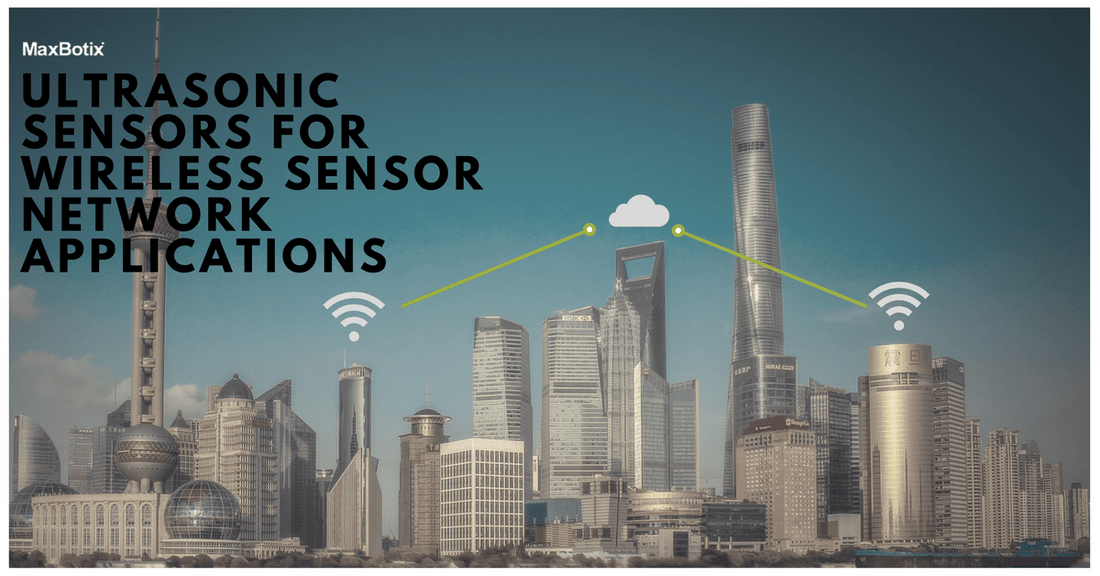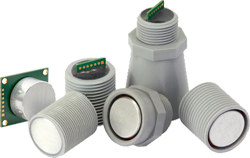Connecting the Internet of Things and the Real World
There’s increasing popularity of the use of wireless networks as tech advances. Wireless sensor networks (WSN) allow the ability to collect data remotely for review. We’ve already written about the Internet of Things (IoT), and it’s real-world applications. In this article, we’ll cover exactly what WSN technology is, its relation to IoT, the industries that are benefiting from wireless sensor networks, and how MaxBotix can fit into your wireless sensor network.What is Wireless Sensor Network (WSN) Technology?
Wireless sensor networks are spatially distributed sensors that monitor physical and/or environmental conditions.What’s monitored by Wireless Sensor Networks?
- Temperature
- Sound
- Pressure
- And More.
What is the difference between a Wireless Sensor Network (WSN) and IOT?
Wireless Sensor Networks sound very similar to the Internet of Things in the application. Wireless sensor networks are a part of the IoT landscape. Sensors are used all over as the hands, fingers, eyes, and ears of IoT. The sensors need to be connected to an IoT platform in order to communicate the information they collect. WSN is the hardware that acts as a bridge to the digital world. Through cloud services or databases, IoT serves as a hub that uses all collected data to develop a meaningful interpretation.Industries using Wireless Sensor Networks and IoT
Libelium has created a list of 50 Sensor Applications for a Smarter World.
Source: http://www.libel m.com/resources/top_50_iot_sensor_applications_ranking
We won’t list all 50 applications but here are insights on the industries we’re currently closely connected to.Smart Cities
Smart Cities leverage the collection of data to lessen resources including labor or the pollution caused by passenger vehicles. Smart Parking is a solution to monitor parking spaces available in a city. Waste Management allows the monitoring of garbage levels in containers so routes can be optimized. Saving labor costs and polluting emissions from vehicles. Traffic Congestion is monitored to optimize walking and driving routes. Smart Lighting allows for adaptive lighting in street lights depending on the weather.Smart Environment
Forest Fire Detection - Monitoring of combustion gases and fire conditions to define alert zones. At the time of writing this, there are fires in California which have claimed many homes. In this article from Slash Gear, it is stated that residents are urged not to trust certain map apps. As the information that has been collected stands, “Google Maps, Apple Maps, and others are able to look at real-time traffic data and offer what are normally smarter routes.” The problem that needs to be worked out is figuring out the difference between roads that aren’t used much and roads that are impassable from the fires.- Snow Level Monitoring - Using our Weather resistant MB7354, Weather Stations are able to monitor snow level for avalanche prevention.
- River Floods - Monitor water levels in rivers, dams, and reservoirs.
Smart Metering
- Tank Level Measurement - We have designed sensors specifically for measuring the levels of oil, water, gas, and dry goods.
Smart Agriculture
We’ve covered the digital revolution of farming in this article, about Smart Farming. Sensor use includes:- Agricultural Drones (mapping fields, planting, crop monitoring, irrigation)
- Agricultural Robots (Tending to crop, weeding, fertilizing and harvesting.)
- Monitoring Livestock (Health and well being, feeding)
Challenges of a Wireless Sensor Network
As wireless network networks continue to evolve there are concerns that are being addressed to make it an easier solution to adapt.- Power consumption reduction
- Reduction of the routing path and time between the source and destination.
- Security Concerns - very important. (The development of the blockchain and its relation to the Internet of Things is will change security.)
- Data analysis techniques
Conclusion
Wireless sensor networks and IoT have the potential to change even more industries. Manufacturing, agriculture, supply chain, and infrastructure have already been transformed and strengthened. As new technologies like the blockchain are introduced to combat key issues like security, the trust in these sensor networks will continue to develop. Do you have any more questions about using MaxBotix Sensors in your Wireless Sensor Network? Email us at techsupport@maxbotix.comOur Sensors Being Used in Wireless Sensor Networks:
ParkSonar-EZ Products
ParkSonar-EZ ultrasonic rangefinders offer stable proximity information in multi-sensor environments, up to 12-foot detection zones, 1-inch resolution, and 2.5-5.5VDC. The output options for this ultrasonic sensor line are logic level output and asynchronous RS232 serial.
Buy NowMB7137 I2CXL-TrashSonar-WR
Features of the weather resistant MB7137, I2CXL-TrashSonar-WR, include centimeter resolution, short to mid distance detection, range information from 20cm to 350cm for the nearest detectable target, up to a 40Hz read rate, and an I2C interface.
Buy NowMB7334 HRXL-MaxSonar-WRS3
Features of the weather resistant MB7334, HRXL-MaxSonar-WRS3, include millimeter resolution, range information from 500mm to 5000mm for the nearest detectable target, heightened sensitivity over our standard sensors, a 6Hz read rate, and various output options: pulse-width, analog voltage, and RS232 serial.
Buy Now




